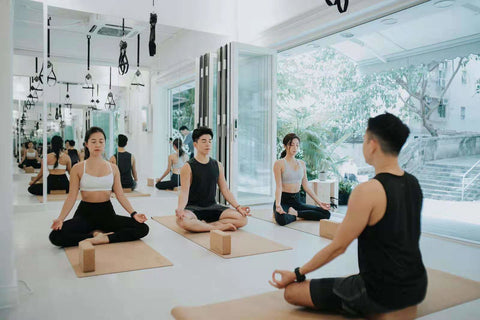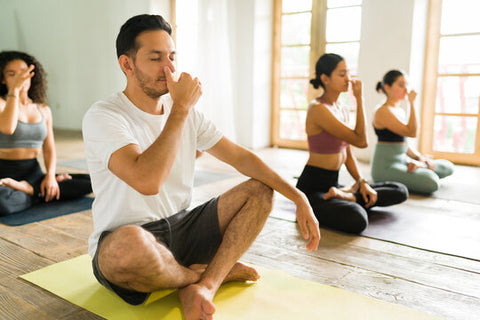The Essence of Pranayama

“Prana” means “the vital energy”, “yama” means to gain control over that. It is an inner process of one gaining control over their inner energies. It is the practice of breath regulation.
Pranayama is referred to breath regulation, it is the predominant component of yoga. It is frequently taught for several asanas and meditations.
This is taught in a considerable amount of elaboration and depth as gaining control over inner energies is important to stabilize the mind and body.
The functioning of the entire human system comprising of then mind and body is ultimately dependent on the prana. Prana has intelligence. It has the karmic memory of an individual. By imprinting energy with memory, it can behave in a certain way.
Due to the complex and chaotic modern world we live in, there is an increasing number of people who are psychologically imbalanced, disturbed, and deranged, due to the lifestyles we live in. Several aspects of our lives are handled in an unconscious way, for which we are paying the price of.
By taking charge of one's Prana, whatever the external situation may be, psychological balance is guaranteed. It prevents physiological ailments and infections to a large extent, including the hazardous chemicals we are exposed to on a regular basis.
Taking charge of your prana and the different activities in the system is a fantastic process.

History of Pranayama
Pranayama goes back to ancient India through the early originals of yoga, around the fifth century BCE. It is an ancient practice that is quite popular today. It has several references in ancient Vedic texts such as the Bhagavad Gita & the Yoga Sutras of Patanjali which are incredibly famous Indian yogic scriptures.
Most modern pranayama practices are based on the original ways, some have additional variants and modifications. The teachings of pranayama vary from schools, gurus, and sources as there are several variations.
Why Should One Practice Pranayama?
Pranayama intensifies and directs the vital energy that is linked to the breath. Pranayama will make one feel more aware, healthy, active and alert; however, the benefits don't just stop there. The practice has a wide range of benefits, such as:
- Pranayama is a powerful practice that will slowly and naturally move one to a higher level of experience.
- It can help one become totally self-aware. Contributes to mindfulness improving focus and concentration.
- Within six months of pranayama practice, one can experience life with sensitivity.
- Drastically reduces stress levels in young adults, it calms the nervous system improving the responses to stress.
- Increases oxygen in the lungs, which is pumped to all the vital organs of the body. This increased oxygen uptake energizes the brain cells. Oxygen supply is crucial.
- Improves sleep quality by drastically reducing the sleep quota and reduces the chances of sleeping issues such as sleep apnea.
- Reduces high blood pressure and promotes relaxation.
- Significant improvements in lung functioning, strengthens the lungs.
- Enhances brain function, improving cognitive flexibilities, reasoning skills, sensory memory performance.
- Reduces cigarette cravings to those who are trying to quit smoking. Reduces the negative effects of smoking withdrawal. Curbs the dependence on nicotine, and aids in quitting smoking naturally.

Why has Pranayama become Increasingly Popular?
Pranayama has become one of the most popular practices of yoga. It has become quite popular during the pandemic (covid-19) due to preventive results. It increases oxygen supply in the blood and thereby develops immunity. It has helped innumerable infected people to recover comparatively faster than others. It has been proven it reduces the risk for many other diseases as well.
It is popularly known to reduce stress and anxiety, that develops in the modern unhealthy and stagnant lifestyles people live in today.
The most immediate source of prana is breath – when it stops, we die. Breath has a direct connection to our emotions, how we feel. There is a direct relation between the breath and thoughts. It is popularly known for calming the mind.
The Importance of Prana
The prana (energy) flows through the Nadis (energy channels/pathways) which determines one's state of mind and body.
With a lack of attention, the energy channels may be blocked, reducing the flow of prana throughout the system. This results in negative emotions and feelings.
Through the practice of pranayama, there is an increase and regulation in prana levels. This results in the flow to be continuous, smooth, and steady which has positive effects on the energy, emotional and physical levels of the body.
In stressful times, we usually tend to breathe rigorously or rapidly. This results to a buildup of oxygen in the bloodstream and decrease in carbon dioxide, which has an impact on the acid-alkaline balance, also known as the pH level of the blood. Through the practice of pranayama, it equalizes the distribution of oxygen and other parameters.

How to get started
- Sit in a crossed legged position on the floor or on a raised platform. Place the left palm on the lap and the right hand touching the nose.
- The right thumb should be placed on the right nostril while the right little finger on the left.
- Pranayama begins with a complete exhalation of the left nostril; this is done by placing the thumb on the right nostril. Followed by an inhalation on the left, closing the left nostril with the little finger exhaling through the right nostril.
- This is followed by an inhalation of the right nostril and an exhalation to the left, by using the two fingers respectively.
- Remember, the practice begins and ends with an exhalation through the left nostril.
This is the original and standard form of pranayama. As a beginner, this can be practiced between 6-7 minutes.
In order to experience the regulation of the breath, place a finger horizontally below the nostrils and exhale. You will notice the breath comes out equally from both the nostrils after the practice.
Whereas before the practice, either nostril is dominant during the exhalation.
To conclude, Pranayama is a highly beneficial practice that can be incorporated into one's activity during any time of the day. It can be practiced separately or combined in a yogic sequence.
.
